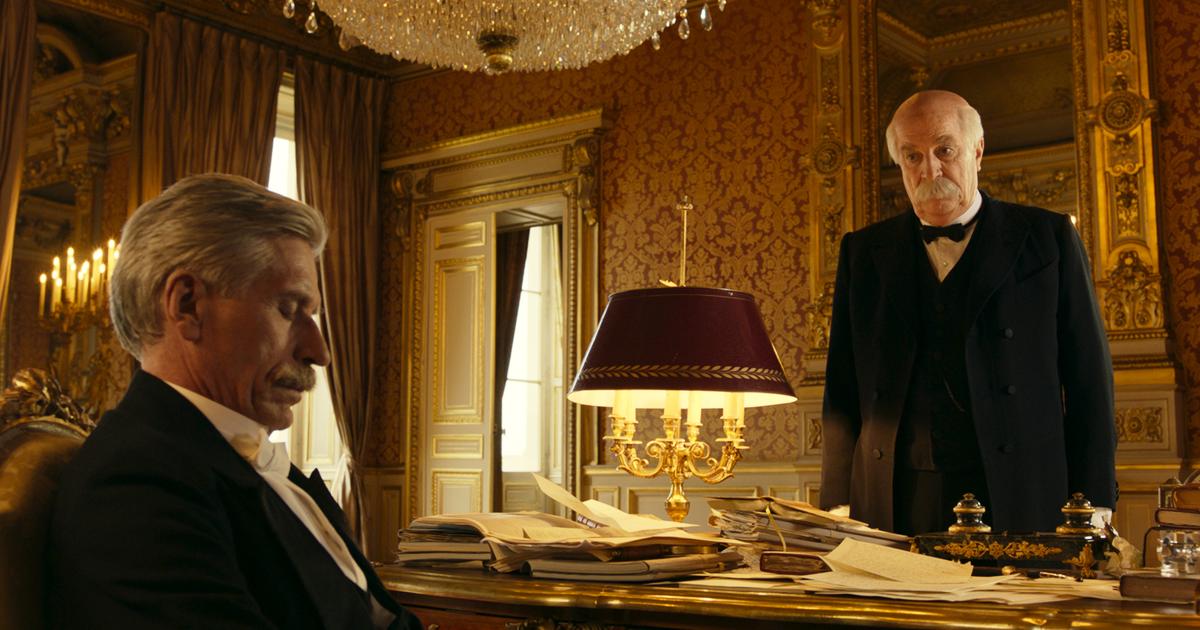Since the beginning of September, spectators have been able, thanks to the political comedy
Le Tigre and Le Présiden
t, to rediscover in theaters one of the most ephemeral, mocked and misunderstood tenants of the Élysée: Paul Deschanel.
The man of letters only remained in office for a few months from February to September 1920. A rehabilitation and a certain form of political utopia deciphered for Le Figaro by its director Jean-Marc Peyrefitte.
The young filmmaker takes up and expands the plot of his short film
The President and the Gatekeeper
released in 2019.
Read alsoOur review of
The Tiger and the President
, duel at the top
LE FIGARO - How did you come up with the idea of resuscitating the memory of Paul Deschanel?
Jean-Marc Peyrefitte.
My parents had told me the story of this President of the Republic who fell from the train at the same time to make me laugh.
But it had aroused in me emotion and a certain fascination.
I wanted to learn and I discovered an avant-garde politician on the abolition of the death penalty, the vote for women.
I found it unfair that his term of office was summed up in this fall from the train.
I immersed myself in the biography of Thierry Billard, the most recent work and close to us.
I also approached Dr. Gerard Viret who in the 80s had written a thesis on Deschanel and the effects of taking barbiturates.
Without forgetting the speeches, publications and correspondence of Deschanel.
Why did you choose Georges Clemenceau as the antagonist?
We needed an adversary to match.
The collective memory of Georges Clemenceau is unequivocal: he is the winner of 14-18, the fierce leader, the tiger, the reformer of the police.
But his conduct towards Deschanel was less irreproachable.
It was a way to give him a flaw—the fixation of being beaten—a bit of humanity.
He, the maker of the Treaty of Versailles, was persuaded to win over this president of the small-scale chamber.
Paul Deschanel was a dreamer, totally unsuited to practicality.
Clemenceau, on the contrary, is versed in all mysteries.
Jean-Marc Peyrefitte on the set of Orange Studio- Tandem
How do we work on this historical material to make it into a political and poetic comedy?
Our film of course takes a few historical liberties but wants to be faithful to the psyche and moods of its protagonists.
I wanted to stay in their intimacy.
Human relationships are always much more interesting than power issues.
With Jacques Gamblin, we modernized the phrasing of the time a lot to make Deschanel a utopian figure.
It was necessary that this duel of the past speaks to the spectators of today.
The problems of our political class have not really changed since.
I would also like people to take another look at these magnificent losers, whose ideas have been ridiculed.
Better consider those who are a bit different and visionary.
And understand perhaps that it is not the strongest who write history.
Where did the idea of using archives and filming certain scenes such as newsreels from the early 20th century come from?
It seemed like a good way to go back in time.
We have completely forgotten that the images of Clemenceau in the trenches, he filmed them after the war for posterity purposes.
From the birth of cinema, the moving image has had a political value.
I adore Charlie Chaplin and this way of filming bodies in very wide shots where they come in full.
That's why I wanted an actor of small stature like Jacques Gamblin, comfortable with his body and the burlesque, a figure thin enough to be overwhelmed by the crowds, the furniture or the height of the ceiling and the huge chandeliers of the Elysee.
For Clemenceau, I was looking for an actor with a green once capable of sublimating a more lapidary language in the face of the long turns of a Deschanel from the French Academy.
The companions of Deschanel and Clemenceau are relegated to the outskirts. The most prominent female character is that of the prostitute Ariane.
On the one hand, this reflects a political world that could not be more masculine.
What I wanted to push with Ariane shared by Deschanel and Clemenceau who frequented the same brothel is the figure of the oracle.
By her position, she knows everything: “in the pile, the French do not lie”.
It has access to the pulse of public opinion.
The young woman caring for Paul Deschanel after his accident is another allegory of popular common sense.
A woman who went through the Great War and took the place of the men who went to the front.

